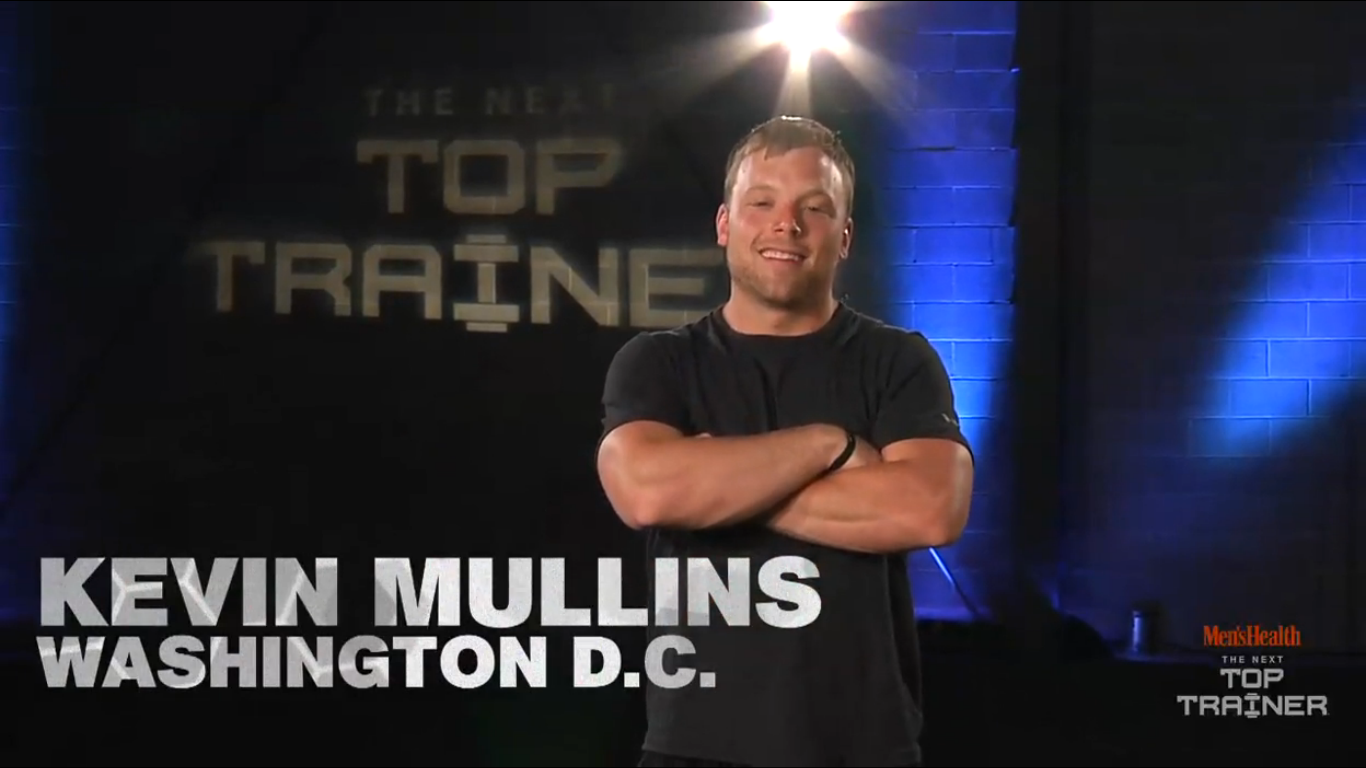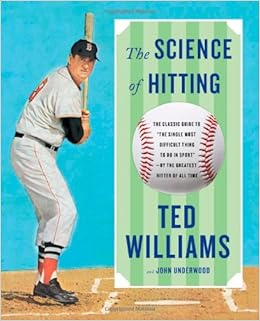Today’s guest post comes courtesy of DC-based Equinox trainer, Kevin Mullins. Kevin attended mine and Dean Somerset’s DC Workshop last Fall, and I found him to be a pretty switched on guy. Plus, it’s obvious he as impeccable taste in the blogs he reads and the workshops he attends.
Enjoy!
There is a lot of information available out there in regards to health, fitness, wellness, and nutrition.
Too much actually.
Everyone from Dan John to Mario Lopez has made money because the ever-growing fitness information market. Some guys, Dan John, have earned their right to speak to you; while others are simply white noise in a crowd that has already collected its share of noise violations.
If you are looking to have a greater impact as a trainer, then you undoubtedly need to be able to sort through all of the books, blogs, certifications, and studies that are out there.
Who is a credible source, how can you apply what you’ve learned? What actually counts as education?
For one, the best education is often paired with an upfront cost. Whether it is a college degree in Kinesiology, a nationally recognized (and respected) certification, or a weekend seminar with some of your favorite trainers; there will be a financial cost.
However, if you choose to invest in your education, than most likely you’ll find yourself having a career in fitness instead of just a job at a local gym, a bicep vein, and too many tubs of pre-workout powder.
It will cost you time and money up front, but boy will you benefit.
That isn’t to say that you have to pay for ALL of your education.
There is tons of free content on blogs of reputable trainers around the net, amalgamated sites like T-Nation or PTDC, and e-books a plenty for the cost of a new video game. Furthermore, there is education that you’ll GET PAID for, as well as what you’ve learned with your own body.
Let’s explore deeper.
Education is the Catalyst
Being able to determine what is valid and applicable can be an immense challenge in and of itself. Add in actual training sessions, building your own body, a business, trying to publish your own content, and squeezing in every episode of every show that you “just have to start watching” and you are looking at an uphill climb.
You need a system.
A system to sort information into easier to digest categories.
The same way your body breaks down food into its little parts so that it can be used for a soon-to-be-determined function…
I personally sort information into four categories. These categories cover all aspects of your learning experience as a trainer and will help you save, store, and recall information when it is needed most.
1. Kinesthetic Education
The experiences of your body can be just as critical to your coaching ability as could a Master’s degree in Exercise Science.
You won’t completely understand a max-load deadlift until you’ve tried yanking a heavy ass barbell off of the floor. You can’t relate with your distance running client who is training for marathon if you’ve never ran further than a few miles on your own.
Now, these experiences are subjective and don’t measure across populations equally.
For example, just because you don’t have lower back pain when you squat doesn’t mean that your clients are wrong for feeling it.
Kinesthetic education falls lowest on my totem pole, but is still a critical element in what we do every day as coaches. It can serve as a bridge when building relationships with your clientele.
Key Point: Do something new with your body, take mental and actual notes for use later on.
Personally, I’ve gained a lot of respect for core bracing by doing some Pilates sessions with the girls at my facility. I’ve learned what it ACTUALLY feels like to “pull-my belly button towards my spine”. It helps when coaching planks and deadlifts.
2. Experience Education
At the end of the day you need to just freaking train.
You’ll program some bad exercises, coach exercises half-backwards, and drink a ton of caffeine. Yet, you’ll learn.
You’ll need to work long hours. You’ll do 6AM and 8PM sessions. You will get clients who are guys and girls, young and old, avid goals and no goals.
Yet, you’ll learn.
You can read about coaching a deadlift a million times, and maybe be able to knock out a hell of a pull yourself, but if you aren’t actively coaching other people to do it, than chances are you will stumble and bumble through it.
Key Point: In order to be a great trainer you need to be in your facility training. You need to figure out what exercises can ACTUALLY be super-set together without frying your client in the first ten minutes of a session, etc.
Personally, I look at sessions as chances to try new cues, or fine-tune my coaching strategies to ensure my clients get a clear, concise message about the task at hand. Find yourself struggling to teach a barbell lift? I’d argue you aren’t a horrible coach, but rather haven’t spent enough time doing it.
3. Actionable-Education
The next layer of education comes from blogs such as this one1, and cumulative sites such as T-Nation and the PTDC.
These easy to read-while-on-the-toilet type of write-ups lend themselves to helping you change something as a trainer or trainee RIGHT NOW.
3 CORE EXERCISES to SHRED YOUR ABS
8 CUES for BETTER SQUAT PERFORMANCE
The list will go on and on with catchy titles attached to articles chock-full of information that you could apply immediately in your next session.
Seeing a client later today that has horrible shoulder mobility? Well, doing some reading at Tony Gentilcore or Eric Cressey’s website will likely find you some tools that you can place into your belt and pull out ASAP.
This information should be viewed on a daily basis even if it is a light-hearted read during your meals. The simple act of subjecting yourself to other views of fitness will sharpen your sword and give you new ways to integrate real knowledge into your sessions.
Another great example of actionable education is weekend clinics that are usually hosted on specific topics. A mix of the hard sciences and practical application; clinics serve as a “hands-on” blog experience for trainers looking to expand their knowledge, tool belt, and presence all the same.
Key Point: Even if it is one short blurb while you are consuming a protein shake between clients, knowledge is still power. These reads won’t tax your brain cells and leave you empty. Though, they may just have you doing new things the very next second you hit a gym floor.
Personally, I love reading blogs and articles while eating my breakfast. I slam an omelet at a café attached to my club and peruse various articles. Some are simply thought provoking while others have points that I can immediately put to use during a session that day.
4. Backbone Education
The most critical element in a trainer’s tool belt is the unfailing knowledge of the hard sciences.
If you don’t understand the why behind the things you do every day then it is going to be really hard to expand your presence in the field. Someone will eventually ask for more information, or even call you out on your practices.
I highly recommend having a sturdy place to rest your feet.
Now, I’m not suggesting that you have to have a Doctorate to be a great trainer. Rather I’m saying that you can’t expect to charge two-hundred dollars an hour if you don’t understand that the body has a variety of energy systems that power our performance.
 If you didn’t have to dive too far into the sciences to get your certification, than it is imperative that you seek them out on your own. College degrees in the field of kinesiology, biomechanics, bioenergetics, and good ol’ exercise science, can provide you with a firm base for you to build upon.
If you didn’t have to dive too far into the sciences to get your certification, than it is imperative that you seek them out on your own. College degrees in the field of kinesiology, biomechanics, bioenergetics, and good ol’ exercise science, can provide you with a firm base for you to build upon.
Certifications such as the CSCS, CES, and Precision Nutrition Level 1 can separate you from your peers. The foundation created by these hard sciences will allow for you to branch out further as you explore the other forms of education since your roots are placed firmly in the ground.
Furthermore, science journals such as the NSCA’s Strength and Conditioning Journal provide information from the laboratory that can be interpreted and implemented in the field. While much of what is studied has limited practical application there still exists the chance to expand your scientific base outwards so that you have a better understanding of the variables that can impact a training session.
Key Point: You need to be able to defend your practices, and should WANT to. Understanding the science behind what you feel, what you see, and what you read about in between bites of your omelet is critical to making that JUMP!
It can be intimidating to a client if you start talking about the ATP/CP cycle regenerating after their set of 3 sub-max squats. Talking about the reasoning behind every repetition scheme will probably bore them too. However, if you truly understand these sciences you’ll find a way, in your own words, to not just train your client, but to teach them WHY they are doing what they are doing.
The Wrap Up
The conventional saying is that knowledge is power. I’d agree. Except for when all of that knowledge is unsorted and prioritized incorrectly.
We all know that guy who did a bodybuilding show who now “takes clients”. Sure, he looks good and knows how to cook one hell of a bland chicken breast, but does he have anything from the other categories?
We also probably know someone that is a genius in science, an old professor perhaps, that could quote the Kreb’s cycle enzyme for enzyme. Yet, does he even lift? Has he ever applied his knowledge to a client?
The take home point is this. Gain knowledge from every avenue possible, sort through the junk and organize it, internalize it, and continue to utilize it in your day-to-day actions. Go out there and be great!
About the Author
Kevin Mullins, CSCS, is a personal trainer and group exercise instructor at Equinox Sports Club in Washington D.C.
Kevin utilizes a listen first, coach second strategy to ensure his clients, and programs, are exceptional…and not his ego.
When he isn’t training clients or writing content Kevin can be found deadlifting, Bicep curling, or finding new, corny ways to emphasize squeezing the glutes. Kevin maintains his own personal site at KevinMullinsFitness.com.















